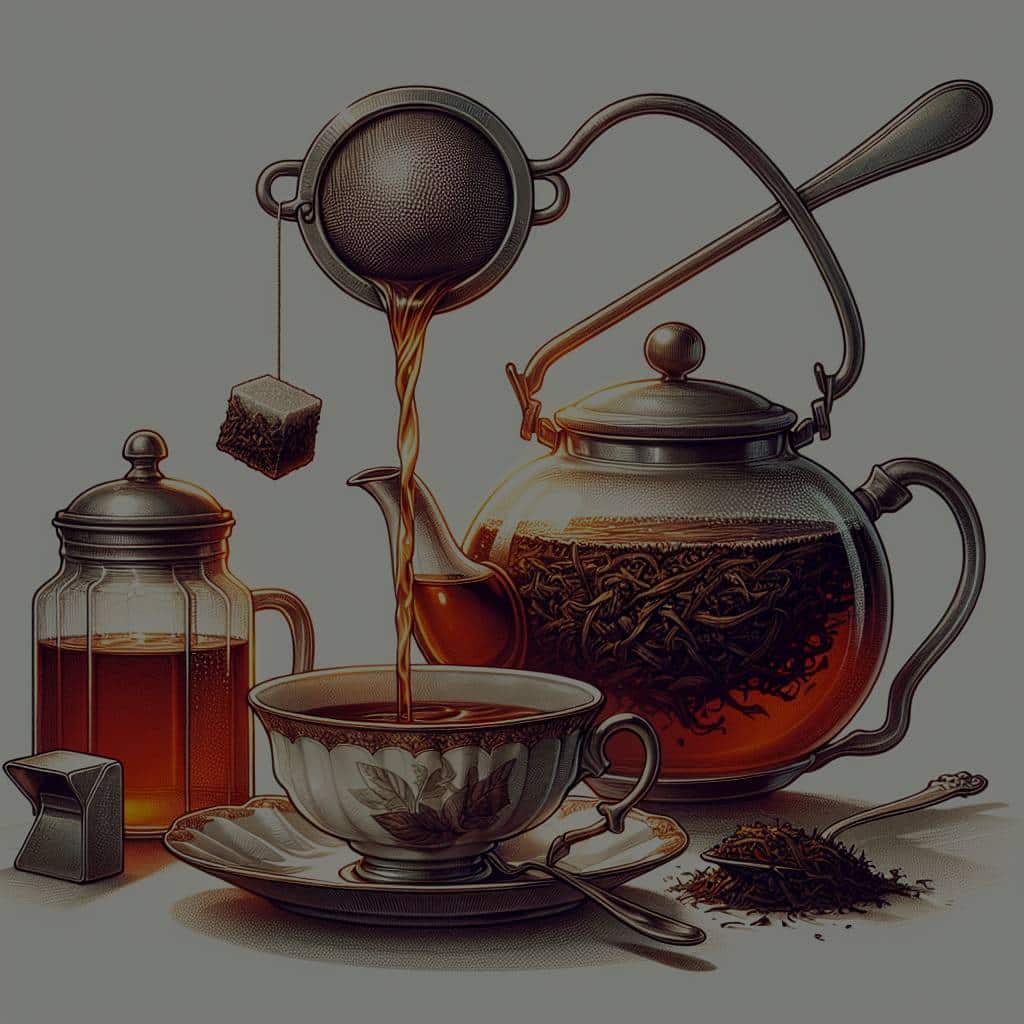How to Brew the Perfect Cup of English Breakfast Tea with Loose Leaves?

English Breakfast tea epitomizes quintessential British tradition. Popular for its full-bodied and robust flavor, it is a staple at breakfast tables, setting the tone for a productive day. But are you getting the most out of your English Breakfast tea experience? If you’ve been using teabags, you might be missing out on the rich nuances of flavor that loose leaves can offer. In this comprehensive guide, we are going to walk you through the detailed steps on how to brew the perfect cup of English Breakfast tea using loose leaves.
The Importance of Choosing Quality Loose Leaves
Before we dive into the brewing process, it’s essential to understand the importance of using quality loose leaves. When it comes to English Breakfast tea, the leaves are the star of the show.
In parallel : What’s the Key to a Luxurious Chocolate and Beetroot Cake with Cream Cheese Frosting?
Unlike teabags, loose leaves are not ground nor crushed, and they retain their essential oils and aromas. This results in a more nuanced flavor profile and a richer, more satisfying brew. Additionally, loose leaves allow for repeated infusions, making them a more economical choice in the long run.
When choosing your loose leaves, opt for well-packaged products from reputable tea companies. The leaves should be whole and uniform in size. Avoid those which contain dust or broken pieces.
Additional reading : How Can You Make a Charming Bramble Cocktail with Fresh Blackberries?
Mastering the Perfect Water Temperature
The temperature of the water plays a crucial role in extracting the best flavor from your tea leaves. One of the common mistakes people make when brewing tea is using boiling water, which can actually burn the leaves and create a bitter taste.
For English Breakfast tea, the ideal water temperature ranges from 200 to 212 degrees Fahrenheit (93 to 100 degrees Celsius). If you don’t have a thermometer, a good rule of thumb is to let the water come to a complete boil, then let it cool down for about a minute before pouring it over the tea leaves.
The Art of Steeping: Timing is Everything
Steeping is the process of soaking the tea leaves in hot water to extract their flavor. This is where the magic happens, and the timing is crucial.
Steep the leaves too long, and your tea can turn bitter; too short, and it may taste weak and underwhelming. For English Breakfast tea, the optimal steeping time is between 3 to 5 minutes. But feel free to experiment according to your preference.
To steep the tea, place the loose leaves in a teapot or a tea infuser. Pour the hot water over the leaves and let it sit for the desired time. Once the time is up, remove the leaves immediately to prevent over-extraction.
Getting the Right Tea-to-Water Ratio
Another factor that greatly affects the taste of your brew is the tea-to-water ratio. Too many leaves can result in an overpoweringly strong brew, and too few can make it taste watered-down.
A good starting point for English Breakfast tea is to use 1 teaspoon of loose leaves for every 8 ounces (240 ml) of water. This can be adjusted depending on how strong you like your tea. Remember, it is easier to dilute a strong brew with more water, so it might be better to err on the side of using more tea leaves.
The Perfect Serve: Crafting Your Ideal Cup
Now that your tea is brewed, it’s time to serve. This is where you can personalize your tea experience.
Traditionalists might prefer to enjoy their English Breakfast tea straight, while others may add a dash of milk or a spoonful of sugar. If you’re opting for milk, warm it slightly before adding to avoid cooling down your tea too quickly.
Remember, the goal here is not just to brew a cup of tea, but to create a delightful experience that starts your day on the right note. The rich, comforting aroma of English Breakfast tea brewed from loose leaves is sure to provide that and more. So go ahead, experiment with these steps, and find your perfect brew.
Exploring the Varieties of English Breakfast Tea
Exploring the varieties of English Breakfast tea can open a whole new world of flavors for you. Although they all fall under the English Breakfast umbrella, the different blends can offer unique taste subtleties.
The classic English Breakfast blend is a mix of Assam, Ceylon, and Kenyan teas, providing a robust flavor and a rich, dark color. This blend is known for its invigorating quality, making it a perfect morning pick-me-up.
Meanwhile, the Irish breakfast blend tends to have a higher percentage of Assam tea, resulting in a maltier and stronger brew. For those who prefer a lighter option, the Scottish breakfast blend, which leans more towards the Darjeeling tea, can be a delightful choice.
Remember, the beauty of brewing with loose leaves is the ability to experiment with different blends and find your perfect balance. Don’t be afraid to mix and match, adjusting the ratios to your preferred taste.
Storing Your Loose Leaves Properly
Storing your loose leaves properly is as crucial as every other step in the brewing process. Proper storage ensures that your tea leaves retain their flavor and freshness, leading to a better cup of tea.
Loose leaf tea should be stored in an airtight container to prevent exposure to air, which can lead to oxidization and loss of flavor. The container should also be opaque to shield the leaves from light, as light can cause the leaves to degrade.
Storing your tea in a cool, dry place away from strong odors is also essential, as tea leaves can absorb odors from their surroundings which can alter their taste. Keep your tea away from spices, coffee, or any other strong-smelling food items.
Conclusion: The Art of Brewing English Breakfast Tea
To sum it up, brewing the perfect cup of English Breakfast tea with loose leaves is an art that involves several variable elements – the quality of the leaves, the water temperature, the steeping time, the tea-to-water ratio, and even the way you serve and store your tea.
Understanding these elements and how they interact can elevate your tea experience and allow you to appreciate the complex flavors and aromas of the tea. It’s all about finding your personal preference and creating your ideal cup.
So, don’t be afraid to experiment and adjust the guidelines to suit your taste. Remember, the goal is to enjoy the experience, as much as the brew itself. Here’s to many delightful mornings with your perfectly brewed cup of English Breakfast tea!
